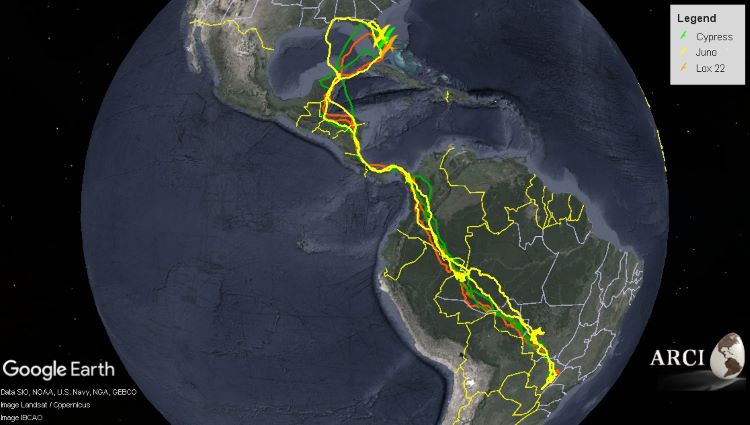
ARCI Map: This map shows the movements of three breeding adult kites, tagged on our PBC Natural Areas, over the course of one year. When the kites leave us in late July, they may fly singly or in groups from those roost sites, hopping down the Florida Peninsula and keeping Cuba on their wingtips as they fly to the Yucatán Peninsula. After refueling there, they hop south through the rainforests of Central America until they almost all pass through a single mountain pass in the high Andes Mountains, finally reaching their wintering grounds in Brazil. While these birds are not listed as Federally endangered, their historic populations and range have seen a decrease of 80%, which makes our PBC Natural Areas, our surrounding public lands systems, and the working ranches in Florida essential to their long-term survival.